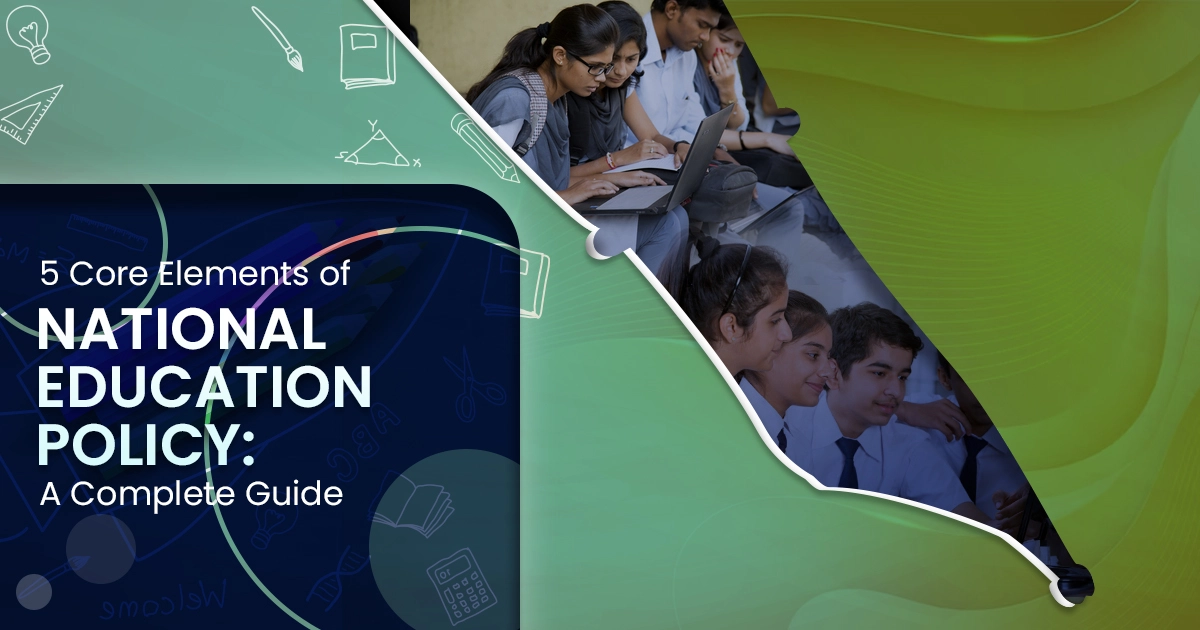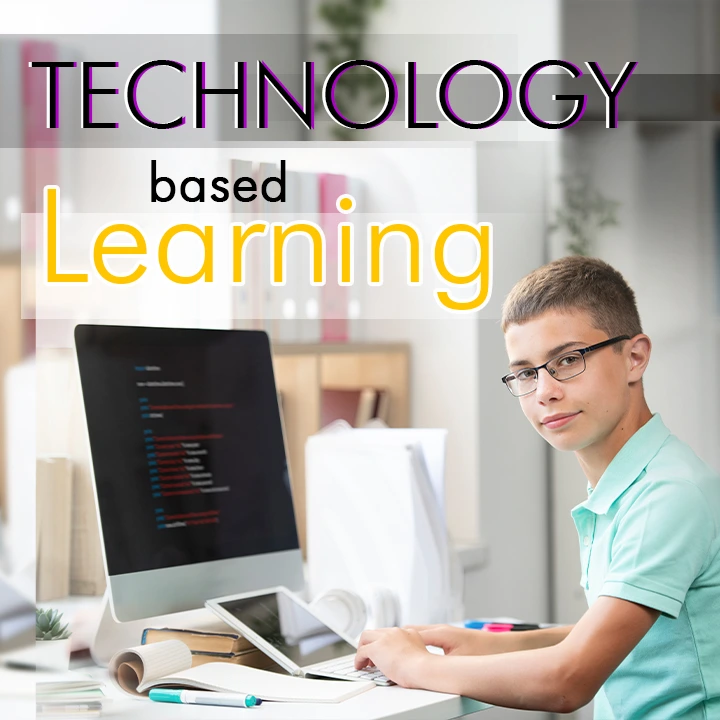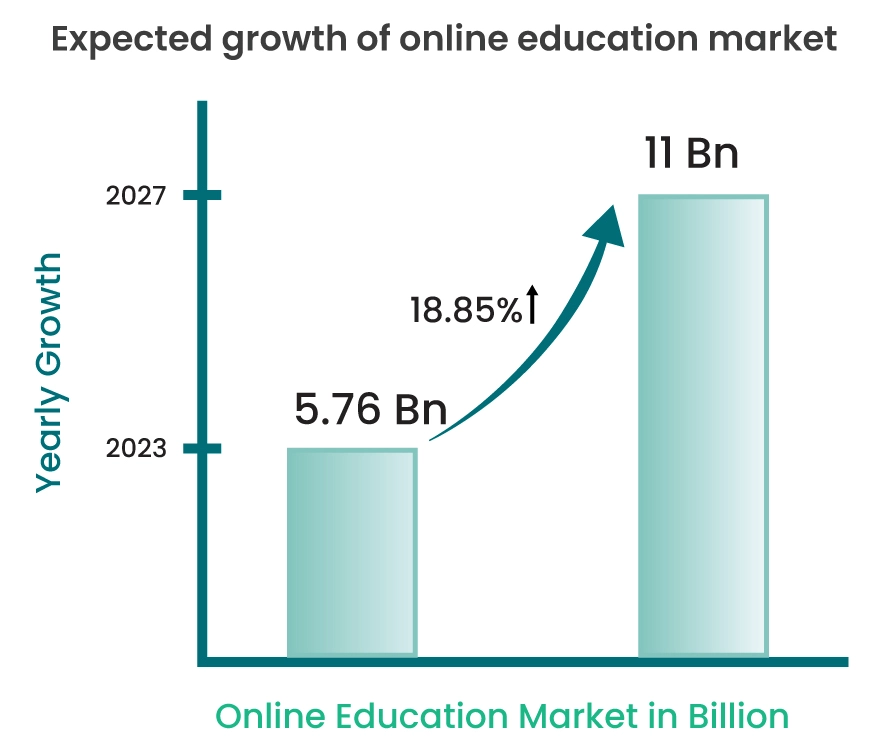
The new education policy aims to achieve 100% GER (Gross Enrollment Ratio) by 2030, from the elementary level to the secondary level in school education.
The core elements of the National Education Policy amendment focus on changing the schooling structure from (10+2 years) to modifying it with (5+3+3+4 years) format.
The policy ensures universal access to schooling for every child under K12 education, emphasizing promoting Indian languages and multilingualism. The overall focus is to improve holistic growth by eliminating the strict boundaries between various subjects.
Motto "Educate Encourage Enlighten" — New Education Policy
NEP 2020 is a 34-year-old education policy created in 1986 and has been in effect for over 30 years. The revised policy has made several changes to the school education system that covers high-tech teaching and learning themes.
Technology-based learning resources have been encouraged to optimize the learning experience. It also seeks to ensure that all students can access basic technical equipment for learning to code. To this end, the policy mandates schools to provide technical equipment to ensure students can learn effectively and efficiently.

The New Education Policy has discussed various teaching and learning patterns. These updated reforms have modified the entire curriculum and educational structure. The 5 Core Elements of National Education Policy are:
Compulsory education for children aged 3-18 is being done to ensure that children of all ages can receive a quality education and are adequately prepared for their future academic and professional lives. Earlier, it was mandatory only for children between the ages of 6-14.
This updated policy also helps to reduce the number of dropouts. It increases the likelihood that children will stay in school until they reach the required age for graduation. With the recent update in the NEP content development, every student will explore a variety of media technologies- from print to digital.
The main goal behind restructuring the age criteria is to provide students with a holistic approach to teaching.
In addition to the theoretical part, the holistic approach uses the latest technologies to ensure that a child gains quality practical knowledge.
The NEP Policy 2020 seeks to utilize E-learning platforms to improve teaching efficiency by providing teachers access to digital content, interactive materials, and real-time feedback.
E-learning will enable teachers to customize their teaching approach to each student's unique needs and learning styles; this encourages the expansion of current online learning platforms to give teachers a wide range of valuable tools to track the development of their students.
By doing so, teachers can identify and address each student's needs to improve their learning outcomes.
Online learning is similar to providing a carpenter with many tools to build a house. With access to the right tools, the carpenter can construct a house faster and more effectively than ever.
Similarly, E-learning provides students with tools and resources to help them learn more quickly and effectively than ever before. From online lectures to interactive applications, eLearning with the tools students need to reach their educational goals.
Also Read:- How To Find The Correct Rapid e-Learning Authoring Tools?
National Education Policy 2020 has recommended schools and institutions form a digital storehouse of study material and related content, including course files, notes, and fun learning activities.
Furthermore, students should be able to evaluate the content's quality and effectiveness. For enjoyable learning, schools can utilize student-friendly tools like games and apps. Ensuring the content is engaging and relevant to the student to maximize learning is key.
Engaging students in content that relates to their interests and needs makes them more likely to be motivated to learn and retain the material.
Additionally, by utilizing tools such as apps and games, students are more likely to be actively engaged in the learning process, allowing for better understanding and retention of the material.
E-learning is similar to preparing a nutritious meal for a growing child - providing them with what their body needs to grow and stay healthy rather than simply offering food that tastes good but does not nourish them.
Similarly, it's important to provide interesting, relevant, and enriching content, not just stuff that looks impressive but doesn't offer anything.
A new world of possibilities emerged as a result of the Covid-19 pandemic. With the need to socially distance, online examination and assessment have become an effective way to continue educational processes while maintaining safety.
To ensure this transition to online learning is successful, the government has implemented regulations and initiatives to confirm the safety and effectiveness of these digital platforms.
The government ensured that online learning would benefit all in the future.
A fact to know: As per Statista report, The Online education market is estimated to be worth US$5.76bn in 2023, which is projected to grow to US$11.50 billion by 2027.

Given this market's growth potential, existing and updated frameworks must leverage best practices to foster successful learning outcomes.
One of the frameworks includes using gamified education in classroom learning. With gamification techniques, educators can enhance students' memory retention power, along with increasing team-building and creative thinking skills.
The online world requires effective learning strategies tailored to the learners' needs and using the latest technologies.
Schools must implement the most optimized blended learning solutions to stay consistent with the significant changes resulting from the national education policy amendment. These implementations are perfectly aligned with NEP 2020.
Despite management's desire to implement the latest education policy in their schools, parents want the curriculum to incorporate everything contemporary and understandable.
School management should, therefore, carefully consider the NEP 2020 and the parents' desires for a comprehensive curriculum.
While encouraging digital learning and education, schools must recognize the value of face-to-face, in-person learning. Multiple effective blended training models should be considered for appropriate sequencing for various subjects.
There are various advantages of blended learning solutions, as it allows students to learn quickly and apply their knowledge in real-time. Blended learning makes learners and students a great tool for developing effective training strategies.
The core elements of National Education Policy 2020 include many changes that may not align with the current school curriculum.
Interesting Read— What is Curriculum Development? Why is it Important?
Acadecraft can assist you with everything as per your needs.
The core elements of the National Education Policy involve preparing lesson plans and materials ahead of time to ensure that teachers are organized and have the resources they need to teach the curriculum effectively. Additionally, audio and visual aids can help to engage students and make the material easier to comprehend.
Therefore, having a well-prepared lesson plan with multimedia elements can be a great way to ensure a successful learning experience for students.
For instance, by using a video clip to explain a concept, such as the water cycle, students can gain a better understanding as they can visualize the process. Moreover, by supplementing theory with interactive activities, learners can be actively engaged to apply their knowledge and increase retention.
References - statista
Share